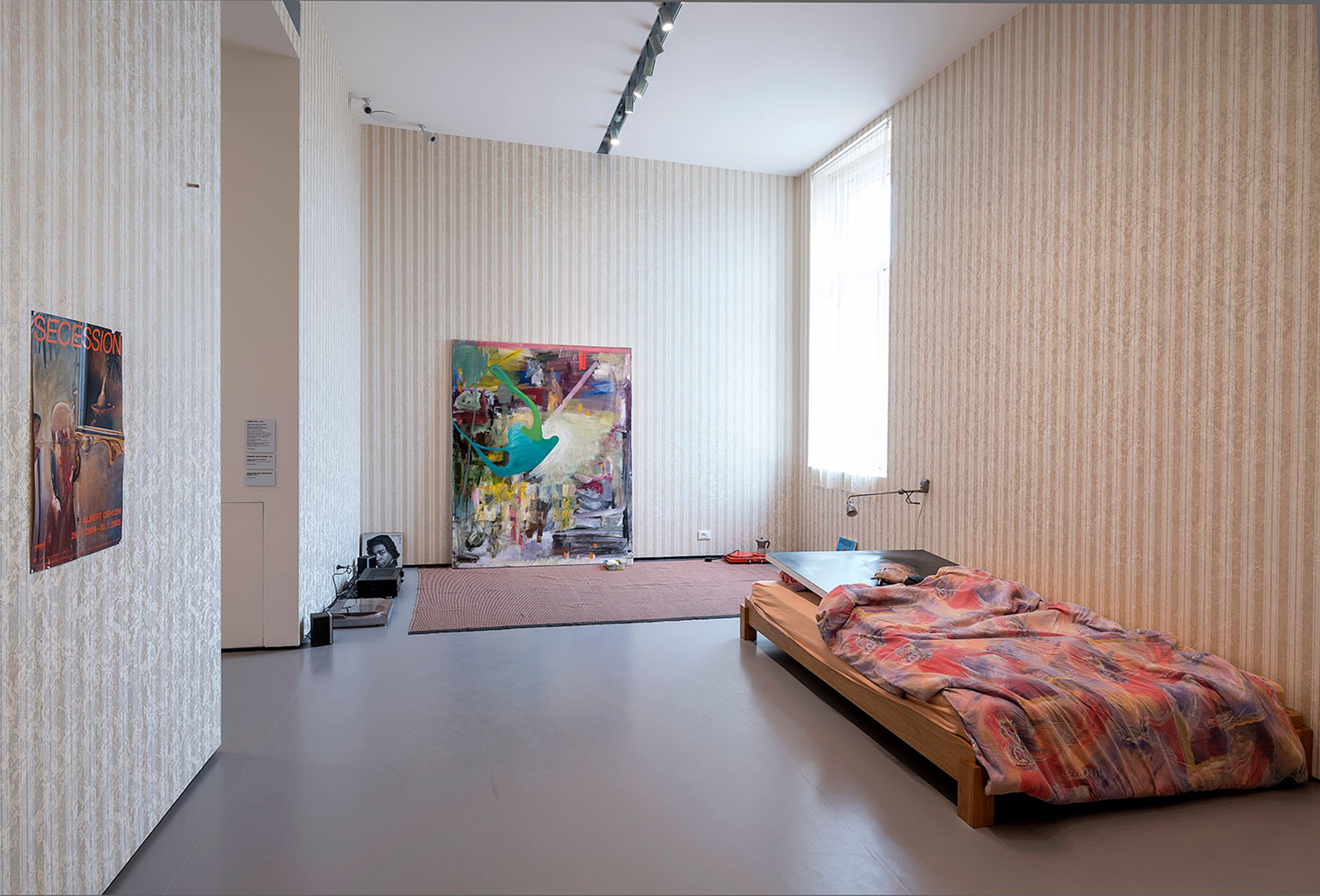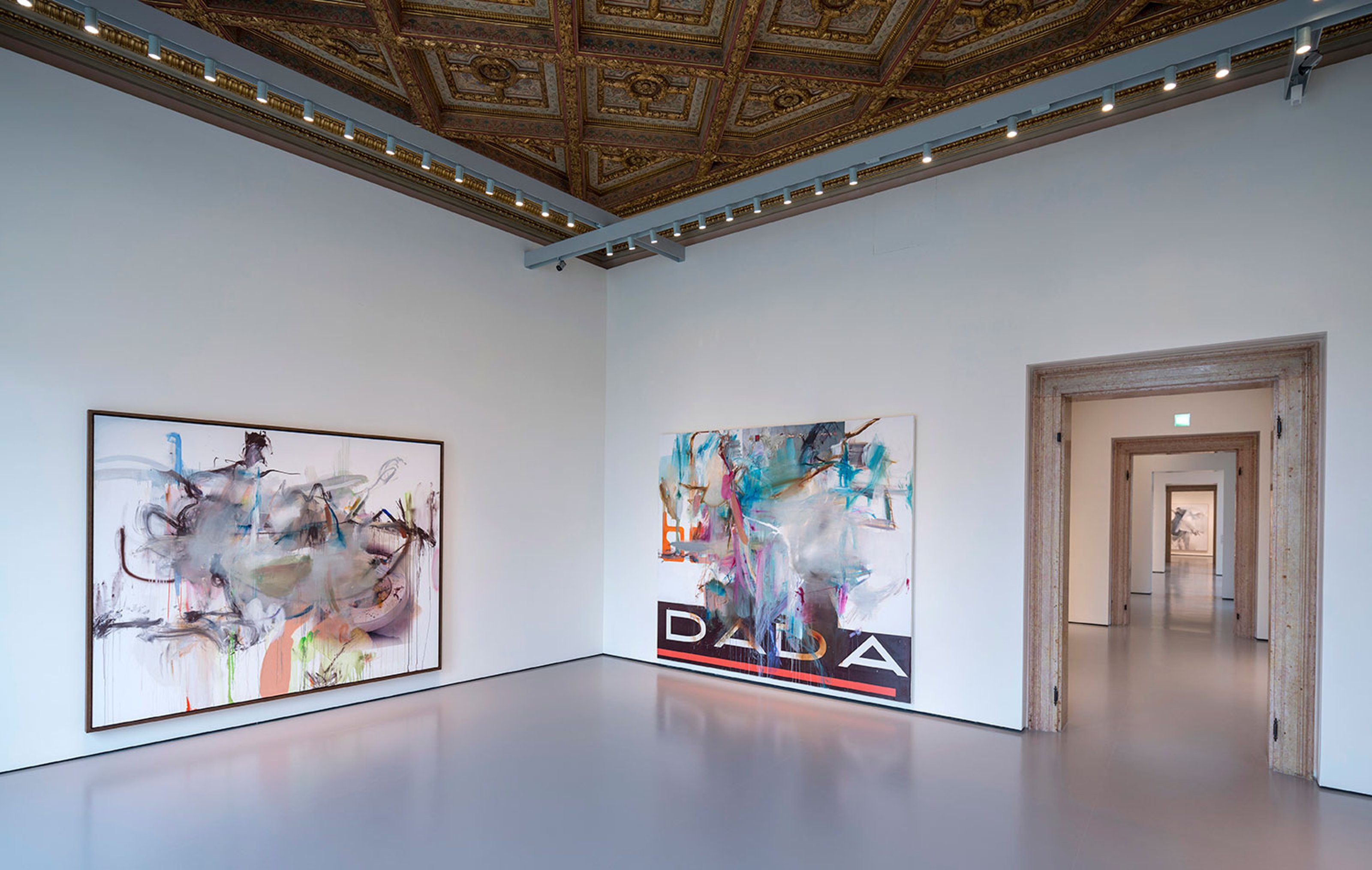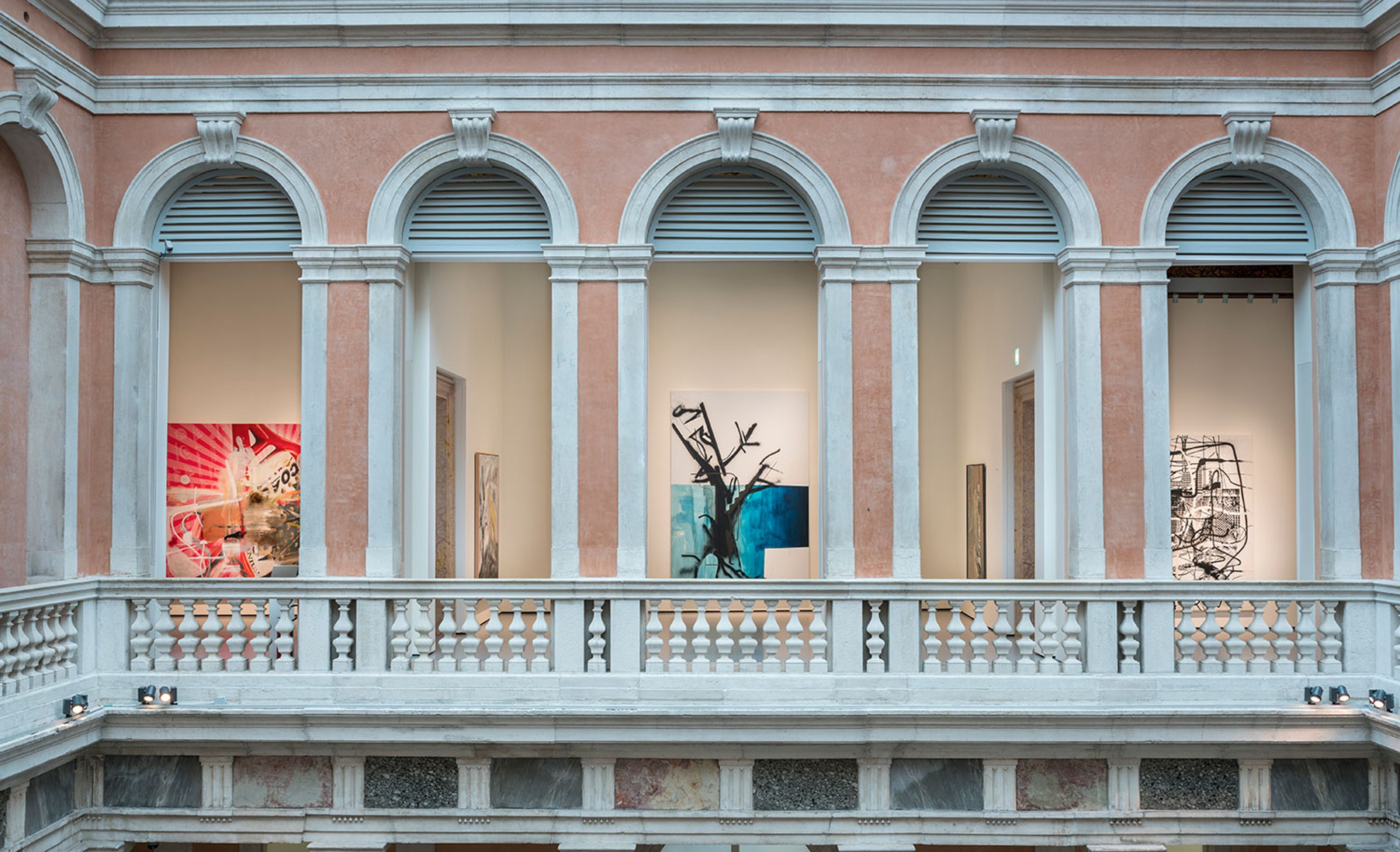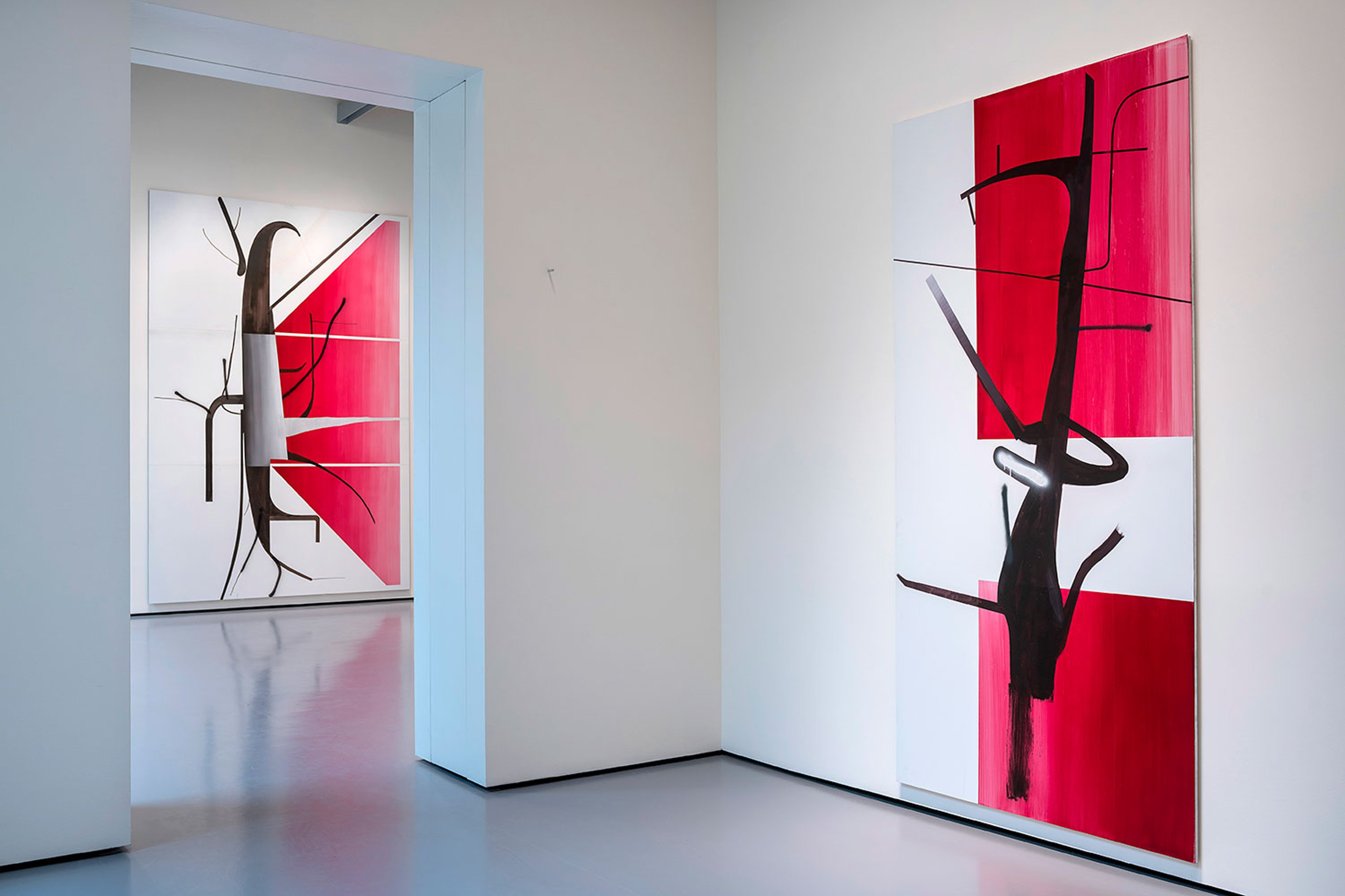
Both times I visited the exhibition Cows by the Water by German artist Albert Oehlen at Palazzo Grassi, something happened to me. I was captivated by the drawing power of his art — in this case emphasized by the contrast of the classical Venetian palace in which it was placed.
I had the opportunity to interview Caroline Bourgeois, curator of the show — and of the entire Pinault Collection. We went through the artist’s career, from the very beginning to his largest monographic exhibition in Italy to date, unveiling the motivations behind the charm of his works, something about his relationship with collecting and François Pinault, and the exchanges he had with Bourgeois herself.

Martina Alemani: Giving a brief overview of Albert Oehlen, can you share with us the path that led to his current show at Palazzo Grassi?
Caroline Bourgeois: We have been following Albert Oehlen’s work for a number of years and he’s had an international career for quite some time. In particular, he’s had exhibitions at the Havana National Museum in 2017; the Cleveland Museum of Arts in 2016 and the New Museum in New York, among others. Oehlen has often conceived exhibitions in an original, unexpected way – the Cleveland show is a good example in this respect –, confronting his work with that of other artists who are important for him. When I was preparing the exhibition, I realized the extent to which he has influenced other artists with his fundamental radicalism: Oehlen is someone who always puts things into question rather than trying to “make a beautiful painting.” His singularity, his constant questioning, the power of his work… all of this compelled us to offer him a solo exhibition at Palazzo Grassi. We wanted to show the public how lively and interesting his work is.

Albert Oehlen Painting No. 1 (Gegen den Liberalismus – Against Liberalism), 1980
Image Courtesy: Gallery Max Hetzler
MA: I am really curious to know more about the background that led Oehlen to his image-making, before meeting Sigmar Polke, starting from the music and subcultures that he was so inspired by in his youth.
CB: He made his Painting No 1 (1980), titled Against Liberalism, at a time when he was studying in Hamburg with Sigmar Polke. There was, at the time, a spirit of “revolution,” of rock and roll, punk, etc., that he shared with his friends. He has told how, when living in a flat in Hamburg whose door was always open, he had left there a blank 190 x 160 cm canvas, and that coming back home one night, he discovered someone had sprayed the canvas.
As he said himself: “As I did not want to buy another canvas, I painted on top of the sprayed varnish. Back then, I was aggressive and wanted something new, therefore it had to be fast. Natch, fast painting, radiator brushes, cheap colors. Anyhow, the sprayed parts bled through. So, I decided it is what it is, now sit down and behold. Until it appealed to me. In all its uptightness and bumpiness it was still Painting No 1. And what it was supposed to mean, I wanted to determine in the next painting. I had to appropriate this cripple by saying that’s it for me and the evidence for it I can adduce with paintings two and three. And so it started.”
Albert has always loved music and has been part of bands–although he doesn’t perform anymore because he wants to concentrate on his painting. He is incredibly knowledgeable about the recent history of music and there is definitely something musical about his work. He reminds me of the great Free Jazz musicians; they are constantly taking risks, just as he does with his work.

**MA: What brought him through the different periods in his artistic practice, with reference to the works shown in the exhibition Cows by the Water**– especially in relation to the Venetian palace and the surrealist spirit? Can you also tell us more about the exhibition’s title?
CB: Cows by the Water is the title of one of his gray paintings, which is actually not in the Palazzo Grassi exhibition. The title can conjure up Magritte’s “période vache”, or cow period if translated literally (although vache in French means more than just “cow”). But in any case, there is a playful dimension in the title, a reference to the absurd and to Surrealism. It wouldn’t be appropriate to distinguish between different “periods” in his work because it doesn’t make much sense for him; he likes to revisit his subjects at different times. In my view, his purpose is rather to go beyond any method and to just try to make a painting, to see what a painting can be.
Art historian and critic Jean-Pierre Criqui says it very well when he comments: “From the start, Albert Oehlen’s work has been through too many contradictory tensions to lend itself, on the part of anyone wishing to attach a subject to it, to anything that has to do with an unveiling, the highlighting of a project or a general purpose. On the contrary, it is based on the immanent critique of such an idea, which compels every commentator to compromise with the impossibility in which he finds himself thus immediately placed.” 2

MA: From an extract of the exhibition’s catalogue that speaks of his computer-assisted compositions, which he then works on manually, Oehlen says: ‘They are extreme “all-over” paintings. From time to time some specific element is accentuated, but then there’ll be something absurd, right in the middle of the picture. It’s the third eye, the Eye of God, so to speak.’ The eye that pursued Cain after he killed Abel, as in La Conscience, Victor Hugo’s poem for which François-Nicolas Chifflart, circa 1885, imagined a striking illustration, in which it seems that the poet gave his own features to the criminal?
Catching the “Eye of God”, and mentioning the title of a posthumous collection by Giorgio Manganelli La crime paie, mais c’est pas évident, how do you see the connection between his obsessions and the drawing power of his art?
CB: “Le crime paie”: in my view, this reference is linked to the idea that destruction is necessary to allow something new to emerge. It is also a reference to the Surrealist movement, which is very important for Albert Oehlen. So the idea is to question any method and then to go further than that. It is also a way to allow yourself to go beyond merely pleasing your public, but to investigate the practice itself and the way a painting is looked at. Here, I see again this approach taken by Oehlen in questioning what a painting is or can be.

MA: How is the relationship of the artist with collecting and collectors— especially with François Pinault?
CB: We visited Oehlen’s studio with François Pinault quite a while ago. As far as I know, Oehlen is not an artist who opens his studio easily, as he is quite secretive. So it was, for us, quite an honor to be invited into his personal artistic space.

MA: How did the exchange with you, as the show’s curator, come about?
CB: I went to see him in his studio in Zurich together with Samia Saouma, from Max Hetzler Gallery, about two years ago to discuss our project of a solo exhibition at Palazzo Grassi in Venice. To be honest, I was quite impressed by him because he is a demanding person, above all with himself. We started discussing the exhibition around the idea of linking his work with music and also of showing works that are not amongst his most famous. We agreed right from the start that the show would not be organized chronologically, but would include all the different periods and styles. The idea was not to have a retrospective but rather a perspective on his work. Albert Oehlen is a fantastic artist to work with as curator. I’ve learned so much with him! He was there all the way, including for the final placement.